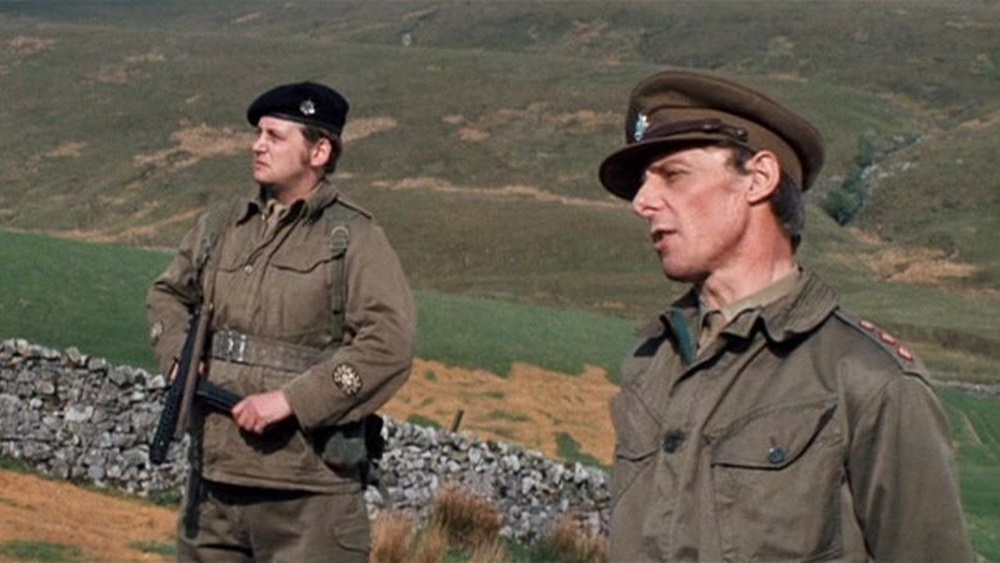NO BLADE OF GRASS. A hybrid of science fiction and exploitation

Between serious, socially engaged cinema and cheap, shock-driven entertainment.
In Asia, a pandemic of a virus attacking all species of grass, including edible ones like rice, wheat, corn, etc., erupts. The contagion rapidly spreads to Africa, Europe, and South America, causing famine, riots, and cannibalism on an unprecedented scale. Global governments attempt to control the chaos through martial law, curfews, or, in the case of China, genocide, but the breakdown of social order is inevitable. When the pandemonium reaches the British Isles, architect John Custance, his wife Ann, daughter Mary, her boyfriend Roger, quickly leave London accompanied by the sociopathic Pirrie and his wife Clary. The group aims to reach Custance’s brother’s remote farm, where food supplies and shelter await them. To get there, the travelers will have to confront a motorcycle gang, desperate people searching for food, and their own weaknesses and desires.

No Blade of Grass is an adaptation of the well-known post-apocalyptic novel The Death of Grass (1956) by John Christopher (one of the many pseudonyms of the British writer Sam Youd). The film was made as a U.S.-British co-production, shot in the English counties of Cumberland, Westmorland, and Yorkshire, with Cornel Wilde behind the camera—a Hollywood star of Hungarian descent who had his biggest screen successes in the 1940s [Oscar nomination for his role in A Song to Remember (1945) directed by Charles Vidor], then turned to directing, producing, and screenwriting. Apart from Nigel Davenport (Custance) and Jean Wallace (Ann), Wilde cast relatively unknown actors in No Blade of Grass because he aimed for realism. For similar reasons, he interspersed the plot with authentic footage depicting overcrowded cities, starving people, smoking factory chimneys, and dying animals.
Furthermore, the film begins and ends with a narrator’s voice-over: “Man has brought devastation upon the environment to a point of no return. There has been much rhetoric about saving the Earth, but in reality, very little has been done. One day the polluted Earth could take no more.” This gives the film a documentary-like feel, although the narrator ominously states, “This film is not a documentary, but it could be.” In this regard, No Blade of Grasss remains frighteningly relevant, as despite more than 50 years having passed since its premiere, the global ecological situation has not only failed to improve but has worsened. The words about rhetoric on saving the planet without real action resonate strongly. Five years ago, a scientific report indicated that little time remained for change. Has humanity done anything significant since then?

However, Wilde’s film realism is somewhat superficial and pretextual because No Blade of Grass is a strange hybrid of “serious” science fiction and exploitative cinema. Apart from the weighty ecological catastrophe theme (presented in a rather heavy-handed manner) and the moral questions in the face of civilization collapse, the film features a lot of violence, including an endless string of murders, a gang rape of a teenager, and even a bloody battle with a motorcycle gang. To make matters worse, these action scenes are accompanied by idiotic psychedelic rock, and the “experimental” editing is chaotic and tiresome. All of this reduces the film to the level of a B-movie production in the style of Russ Meyer. There’s no doubt that No Blade of Grass had some influence on films like 28 Days Later (2002) by Danny Boyle, The Happening (2007) by M. Night Shyamalan, and The Road (2009) by John Hillcoat, but it seems that such an important topic deserves a much better film.

